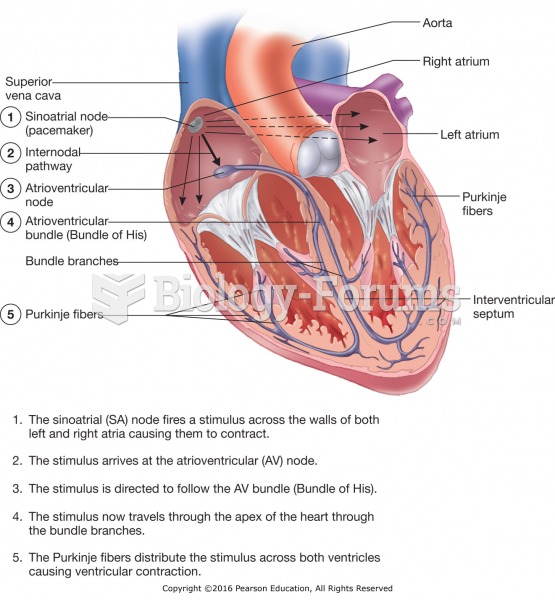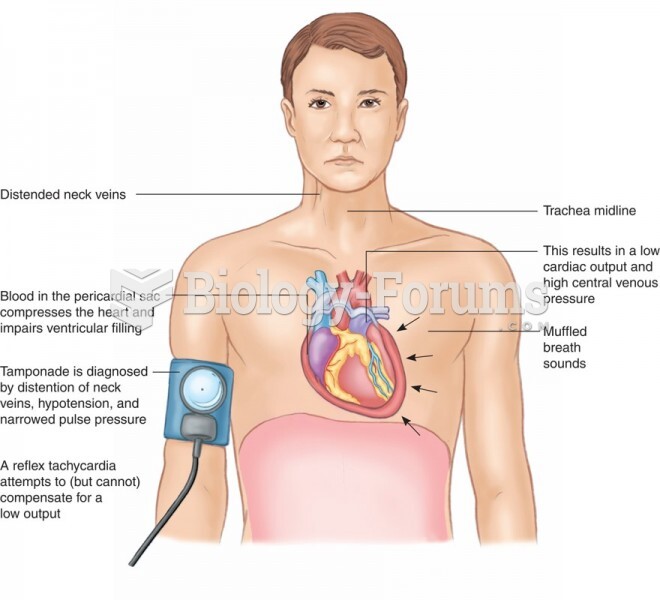|
|
|
The people with the highest levels of LDL are Mexican American males and non-Hispanic black females.
The heart is located in the center of the chest, with part of it tipped slightly so that it taps against the left side of the chest.
Only 12 hours after an egg cell is fertilized by a sperm cell, the egg cell starts to divide. As it continues to divide, it moves along the fallopian tube toward the uterus at about 1 inch per day.
Bisphosphonates were first developed in the nineteenth century. They were first investigated for use in disorders of bone metabolism in the 1960s. They are now used clinically for the treatment of osteoporosis, Paget's disease, bone metastasis, multiple myeloma, and other conditions that feature bone fragility.
The Romans did not use numerals to indicate fractions but instead used words to indicate parts of a whole.







